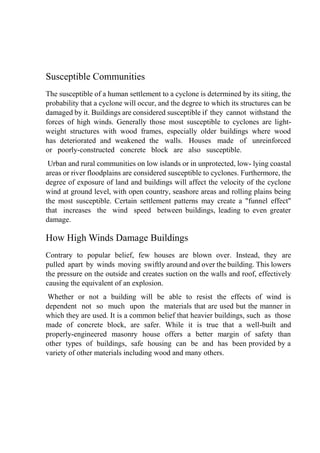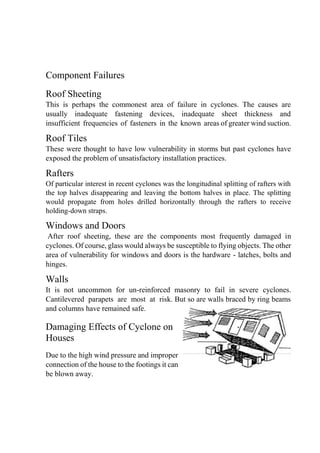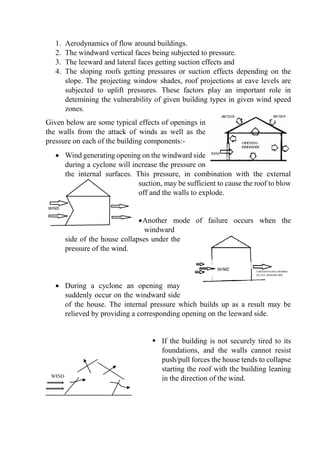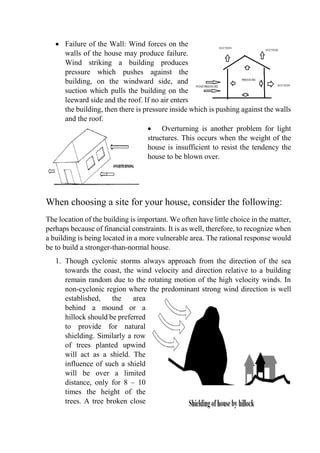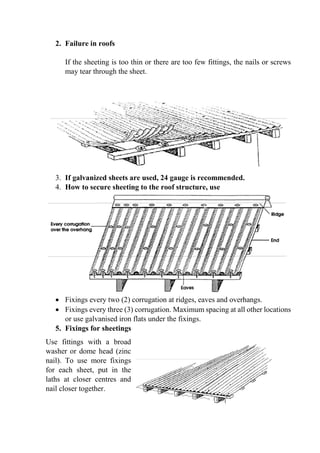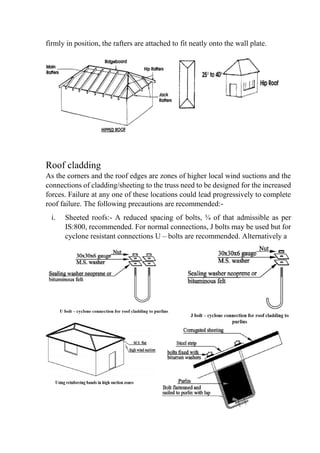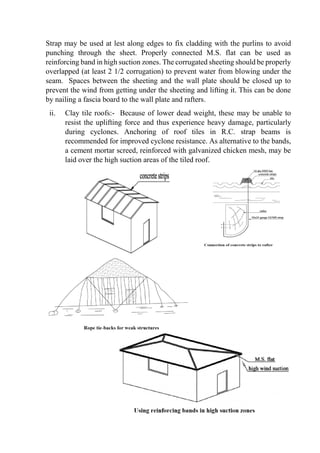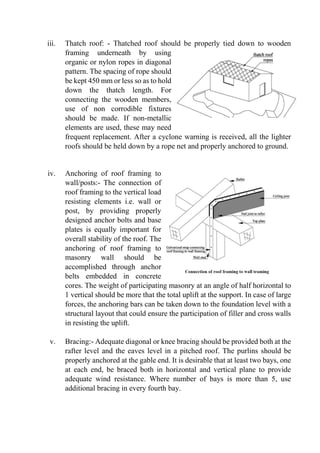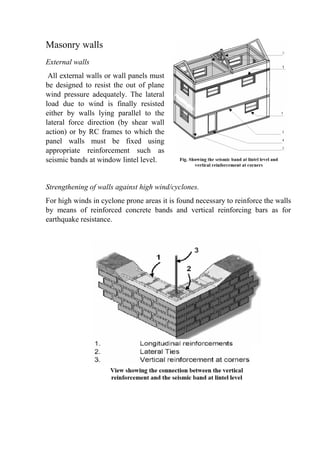The seminar report discusses cyclone-resistant building design, focusing on various structural components' vulnerabilities, such as roofs, foundations, and walls, against high winds. It emphasizes the importance of material quality, proper connection details, and design considerations that enhance the stability of buildings in cyclone-prone areas. The report also outlines best practices for site selection and construction techniques to mitigate cyclone damage.


